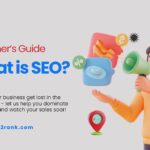On-page SEO is crucial for improving your blog’s visibility on search engines. By optimizing your content properly, you can rank higher on Google, attract more visitors, and enhance user experience. Below is a seven-step on-page SEO checklist to help you optimize your blog posts effectively.
1. Keyword Research and Placement
Before writing, research relevant keywords that your target audience is searching for. Use tools like Google Keyword Planner, Ahrefs, or Ubersuggest to find high-traffic, low-competition keywords.
Where to place keywords:
- Title tag
- URL
- First 100 words
- Subheadings (H2, H3)
- Image alt text
- Meta description
Avoid keyword stuffing; instead, use them naturally throughout your content.
2. Optimize Title Tags and Meta Descriptions
Your title tag is one of the most important ranking factors. It should be engaging, relevant, and include your target keyword. Keep it under 60 characters to ensure it displays properly on search results.
A compelling meta description (under 160 characters) helps improve click-through rates (CTR). While it doesn’t directly impact rankings, a well-written meta description can attract more visitors to your blog.
Example:
Title: On-Page SEO Checklist: 7 Essentials for Optimizing Your Blog Posts
Meta Description: Learn 7 essential on-page SEO tips to boost your blog’s ranking on Google. Follow this simple checklist for better search engine visibility.
3. Use SEO-Friendly URLs
A short, descriptive URL improves user experience and rankings. Avoid long, complicated URLs with numbers and unnecessary words.
Best practices:
✅ Good: yourwebsite.com/on-page-seo-checklist
❌ Bad: yourwebsite.com/p=12345?blog-seo-tips
4. Proper Heading Structure (H1, H2, H3)
Headings make your content easier to read and help search engines understand your structure. Follow this hierarchy:
- H1: Main title of the blog (should include your primary keyword).
- H2: Major sections (e.g., On-Page SEO Checklist).
- H3: Subsections under H2.
Breaking up content with headings improves readability and SEO.
5. Optimize Images with Alt Text and Compression
Images enhance engagement, but they also affect page speed and SEO. Use descriptive file names and alt text to help search engines understand images.
Example:
✅ Good: on-page-seo-checklist.jpg
❌ Bad: image123.jpg
Use tools like TinyPNG or ShortPixel to compress images and improve loading speed.
6. Internal and External Linking
- Internal links: Link to other relevant blog posts on your website to keep visitors engaged.
- External links: Link to authoritative sources to build credibility.
Use descriptive anchor text instead of generic text like “click here.”
7. Mobile-Friendliness and Page Speed
Google prioritizes mobile-friendly websites. Use Google’s Mobile-Friendly Test to check if your blog is responsive.
Also, improve page speed by:
- Compressing images
- Using a lightweight theme
- Enabling browser caching
- Using a Content Delivery Network (CDN)
Conclusion
By following this on-page SEO checklist, you can enhance your blog’s visibility, attract more readers, and improve search rankings. Focus on quality content, keyword optimization, and technical SEO to achieve long-term success.
Need help with SEO? Implement these steps and watch your blog grow! 🚀




